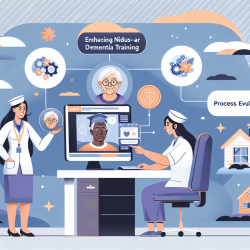Introduction
As professionals dedicated to enhancing the communication skills of children, speech-language pathologists (SLPs) often rely on evidence-based practices to guide their interventions. In a similar vein, the research article "Clustering of Uveal Melanoma: County Wide Analysis within Ohio" provides valuable insights that can be extrapolated to improve data-driven decision-making in speech-language pathology. While the study primarily focuses on the epidemiology of uveal melanoma, the methodologies and findings can inspire SLPs to refine their approaches to assessing and addressing communication disorders.
Understanding the Research
The study conducted a comprehensive analysis of uveal melanoma cases in Ohio from 2000 to 2019, utilizing the Ohio Cancer Incidence Surveillance System (OCISS) database. Researchers aimed to determine if there was any geographic or temporal clustering of uveal melanoma cases. Interestingly, the study found no significant evidence of clustering, but it did highlight variations in incidence based on socioeconomic factors, such as income and population density.
Applying Research Methodologies to SLP Practice
SLPs can draw parallels between the research methodologies used in this study and their own practice. Here are some key takeaways:
- Data Collection and Analysis: Just as the researchers used a robust database to analyze uveal melanoma cases, SLPs can benefit from systematically collecting and analyzing data on their clients. This could involve tracking progress over time, identifying patterns, and adjusting interventions based on data-driven insights.
- Socioeconomic Considerations: The study highlights the importance of considering socioeconomic factors in health outcomes. SLPs should be mindful of how these factors might influence communication disorders and tailor their interventions accordingly. For example, children from lower-income families might face additional barriers to accessing therapy, which should be considered in treatment planning.
- Geographic and Demographic Factors: Understanding the demographic and geographic context of clients can enhance the effectiveness of interventions. SLPs can use demographic data to identify potential risk factors or barriers to communication development, allowing for more personalized therapy plans.
Encouraging Further Research
The findings of the uveal melanoma study underscore the importance of ongoing research in understanding complex health conditions. SLPs are encouraged to engage in research activities, whether through formal studies or informal data collection and analysis in their practice. By doing so, they can contribute to the growing body of knowledge in the field and improve outcomes for children with communication disorders.
Conclusion
While the study on uveal melanoma may seem distant from the field of speech-language pathology, its methodologies and findings offer valuable lessons for practitioners. By embracing data-driven decision-making, considering socioeconomic and demographic factors, and engaging in continuous research, SLPs can enhance their practice and create better outcomes for children. For those interested in delving deeper into the original research, you can access the full paper here.










